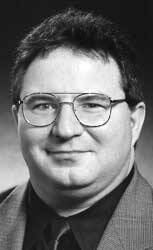With Election Day less than a month away, we are neck-deep in polling data on the presidential race and speculations about what voter turnout will be. This is not a bad moment, then, to recognize three things: polling remains as much of an art as it is a science, voter turnout rates are not as easy to measure as one might suppose, and the “youth vote” is both bifurcated by education status and dwarfed by the “senior vote.”
In the 2008 presidential primaries, top pollsters picked the wrong Democratic and Republican winners in New Hampshire and several other states. As survey experts later discovered, the pollsters did not reach out to find enough hard-to-locate voters. In some cases they interviewed too few union members and too many people without much schooling. And often they interviewed anyone who answered the telephone instead of a particular person named in the sample.
No poll, whatever it asks and however carefully it is worded, can provide us with a reliable measure of how people think or feel unless it is based on a random sample of the relevant population. Any given voter or adult must have an equal chance of being interviewed.
And even perfect polling involves sampling error, the difference between the results of polls conducted at the same time. For instance, if one poll shows that 60 percent of all Americans intend to vote for a given candidate, and another poll taken at the same time finds that 55 percent do, the sampling error is 5 percent.
Say, for example, that a well-conducted poll finds that 52 percent prefer Obama and 48 percent prefer Romney, with an error of plus or minus three points. To calculate the range of results the poll is predicting, you need to add and subtract the error number on both sides of the finding. In this example, the poll predicts an outcome somewhere in the vast territory between 55 to 45 in favor of Obama (a landslide for the incumbent) and 49 to 51 in favor of Romney (a close win for the challenger).
Voter turnout rates are calculated by dividing the total number of voters by the voting-age population or VAP (all persons age 18 or older). Measured by the VAP, in 2008 turnout was 56.8 percent. But as the political scientist Michael P. McDonald has stressed in several major studies, the VAP includes millions of voting-age noncitizens, ex-felons and persons overseas who are not eligible to vote. Subtract these groups from the denominator and turnout in 2008 among the voting-eligible population or VEP was 61.7 percent. Finally, among the voting-registered population or VRP, turnout in 2008 was 70 percent.
No matter how it is measured, among all age groups voter turnout is lower in midterm election years than in presidential election years. For instance, according to the Center for Information and Research on Civil Learning and Engagement, the (VAP-measured) 2008 turnout rate among citizens age 18 to 29 was 51.1 percent, but the 2010 “youth vote” was just 24 percent, on a par with the anemic 22 percent to 25 percent youth voter turnout rates recorded in each midterm election year since 1998.
But as Circle also reports, among college-educated citizens age 18 to 29, turnout was 62.1 percent in 2008 and 32.9 percent in 2010. Among citizens in that cohort who did not attend college, turnout was just 36 percent in 2008 and 16 percent in 2010.
Voter turnout is highest among senior citizens. U.S. Census Bureau data indicate that in 2010, the 20.6 million citizens age 65 to 74 (about 10 percent of the total U.S. population) cast 12.7 million votes, or 14 percent of all votes cast, while the 26.7 million citizens age 18 to 24 (about 13 percent of the total U.S. population) cast only 5.6 million votes. While we cannot predict election outcomes with precision, we can be sure that whoever wins, official Washington will continue to care more about Medicare than about job training for young unskilled workers or about college loans.
Finally, surveys show that more than 80 percent of Americans consider voting a civic duty. For Catholics, that civic duty is bolstered by the catechism’s injunction that as “far as possible citizens should take an active part in public life.” But the sad fact is that on Election Day at least 80 million Americans (half registered, half not), including millions of Catholics, will not vote at all.








